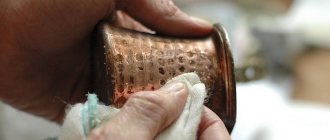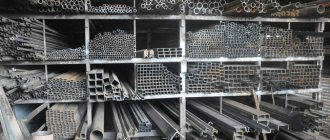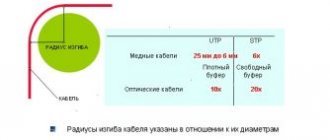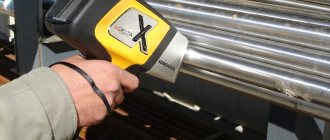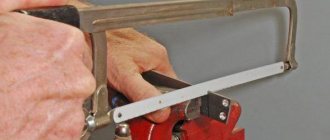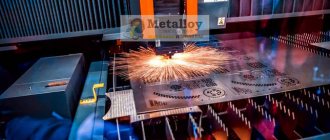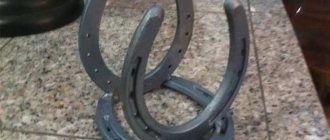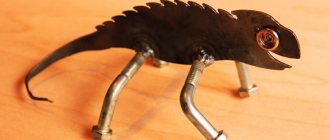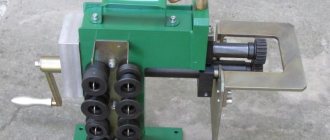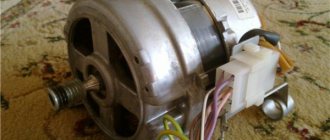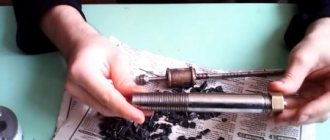Other meanings of this word:
- Nats in reverse
- Nats backwards
- “The gait is gentle, light...”
- "Rental" camp for grain growers
- Administrative and police unit of the county (in the Russian state until 1917)
- Anagram for the word "nast"
- Blooming
- Blooming as something rental
- Blooming as a device
- Blooming; camp, parking place
- A large machine or system of machines used to make large metal products
- The army of the belligerent side
- Drawing...
- Goes back to the Indo-European root “*st-” and in Persian means “place, country”. In modern Persian, the suffix “-istan” is used to form toponyms
- Belligerent (high)
- Enemy camp
- Both field and maiden
- Both rental and field
- Hut in the taiga
- Cossack camp
- Camp
- Enemy camp
- Combiner camp
- Camp in Rus'
- Enemy camp
- Farm workers camp
- Tractor camp
- Grain growers' camp.
- Ruler for musical notation
- Rulers for musical notation
- Metal rolling machine
- Weaving machine
- Temporary location; camp
- Location, parking
- Parking place
- Regiment parking area
- Tractor parking area
- A mishmash of the word “nast”
- At the factory or at the girl's
- Set of rulers for notes
- Musical namesake of a girl's waist
- The musical namesake of a girl's waist.
- Musical, field or maiden
- Hugged a Persian woman
- It can be field or rental
- Support, base for working tools, mechanisms
- Field camp for grain growers.
- Field site
- Field or girlish
- Field camp
- Field, rental
- Field, rental or maiden
- Rental car
- Rental camp.
- Rental…
- Rolling unit
- Rolling unit or lines of notes
- Five rulers for notes
- Five music lines
- Parking for an entire regiment
- Slender girlish...
- The girl is slim
- Tabor from a Czech point of view
- Tabor, kosh
- Slim girlish
- Thin girlish or rolling
- Thin girlish or rolling.
- Combiners rest point
- Torso
- Body of a girl
- Human torso
- What is a direction?
- Seized by silks
Rolling tool.
The rolling tool is rolling rolls (Fig. 7D), which, depending on the profile being rolled, are divided into:
1. Smooth - used for rolling strips, sheets, etc. If, after one transition, a further reduction in the thickness of the rolled workpiece is required, then the smooth rolls must be brought closer to each other at the required distance using a special pressing mechanism).
2. Stepped - used for rolling strips, etc. These rolls allow, after the first transition (Fig. 7D, b, left), to immediately continue reducing the thickness of the rolled workpiece in the adjacent working area with a smaller gap (Fig. E7, b, right), i.e. do not require the rolls to be brought closer to each other and thereby increase productivity).
3. Stream - used to produce long products.
Stream
called a cut on the working surface of the roll.
The combination of two streams (Fig. 7D, c and Fig. 7D, a) or a stream and a protrusion (Fig. 8D, b) of rolling rolls corresponding to each other is called caliber
.
If the parting line of the rolls is within the outline of the pass, the pass is called open
(Fig. 7D, c and Fig. 8D, a).
If the parting line of the rolls passes outside the caliber, the caliber is called closed
(Fig. 8D, b).
Rolling tool. Rolling smooth, stepped and grooved rolls
|
|
Rolling equipment (Fig. 9D and Fig. 10E).
Rice. 9D Diagram of a rolling mill line 1 – rolling rolls; 2 – bed; 3 – spindle; 4 – coupling; 5 – working cage; 6 – gear cage; 7 – coupling; 8 – mechanical gearbox; 9 – electric motor; 10 – mechanism for adjusting the gap between the rolls A set of rolling rolls 1 with a frame 2 in which they are fixed is called the working stand of a rolling mill 5 ( | |
| Rice. 10D Layout of working stands of mills 1 - working stands; 2 — gear stands; 3 – engines; 4 – mechanical gearboxes. | single-stand mills (with one working stand, Fig. 10D, a) and multi-stand mills (Fig. 10D, b and c) . During rolling, the final shape and dimensions of the product are formed as a result of successively approximating the shape and dimensions of the initial workpiece to the given one. Products of simple shape can be formed in one pass through one working stand (single stand mills). A product of complex shape is formed, as a rule, in a greater number of passes through one or more working stands (multi-stand mills). Multi-stand mills can have linear or sequential stands. In linear mills, the stands are located in one or several lines (Fig. 10D, b). In each individual line, the rollers are interconnected and rotate at the same speed. The most advanced are considered to be continuous multi-stand mills (Fig. 10D, c), in which the working stands are located sequentially one after another at distances less than the length of the workpiece, as a result of which it is sequentially (without additional movement of the product from one stand to another) rolled in several stands. The number of working stands of continuous mills is equal to the required number of passes of the workpiece, as a result of which it passes through each stand only once. This achieves high productivity with the complete elimination of manual labor. |
Rolling is carried out in two stages: rolling the ingot into a semi-product and rolling the semi-product into finished steel.
Therefore, according to their purpose rolling mills are divided into semi-product production mills
and
mills for the production of finished products .
Mills for the production of semi-products include crimping and blanking mills.
Crimping mills (bloomings and slabs)
designed for rolling ingots (up to 60 tons) into large billets (blooms and slabs).
Billet mills
are designed to produce semi-finished products with a smaller cross-section from blooms, slabs or ingots of small mass.
Ready-rolled mills
characterized by the type of products produced: long products, sheets, pipes and mills for special types of rolled products.
Features of the operation of rolling machines
Purpose
The equipment allows us to produce various types of products:
- Long products. These include rods and strips of various geometric shapes, as well as shaped parts, spring and rhombic.
- Special purpose profile. Metal products in the form of angles, channels, I-beams, as well as combined blanks with a variable cross-section.
- Rolled products in the form of thin sheets up to 4 mm, as well as thick sheets more than 4 mm.
- Pipe profile with connection using welding and seamless joints.
Design and principle of operation
The rolling press consists of three main parts:
- The cage is working. The design of these elements includes rolling rolls, installation plates, a base frame, and wiring.
- Electric motors for transmitting movement to working elements.
- Mechanisms of distribution and transformation of motion. Consists of a spindle, couplings and gears.
The units differ in the number of stands and work roll sizes:
- Machines for thick metal have up to two working compartments with rollers ranging from 3 m to 5.5 m in length. In addition, vertical rollers can be installed, which are used for processing side edges.
- Broadband equipment contains up to 15 stands, rolls have a length of up to 2.5 m.
- Universal rolling presses consist of 5 compartments, and the length of the shafts is up to 1.5 m.
In industry, there are three methods for processing metal raw materials until they acquire the required geometric shape:
- In the first case, a rolling device is installed on the casting unit, and the initial contour of the part is obtained until complete crystallization. The disadvantage of this method is the need to maintain a high temperature until the end of processing, as well as additional precise running-in.
- As a result of rolling through furnaces with temperatures inside the chamber up to 1350 C, the edges are independently welded. At the exit of the equipment, a finished pipe profile is obtained.
- The third method involves manufacturing parts at a workpiece temperature corresponding to the environment. To prevent defects, the units use a large number of rollers that rotate in the opposite direction.
Specifications
Rolling machines have characteristics that distinguish them from analogues:
- the type of profile produced in a particular installation can be pipe, section, as well as thin and thick sheet;
- the range of metal thickness intended for rolling is from 0.4 mm to 200 mm;
- necessary raw materials for rolling;
- performance indicator, the choice of machine before purchase, as well as the preparation of raw materials, depends on this factor;
- number of working cells with rolls for the required profile;
- the diameter of the working shafts for rolling, as well as their useful length;
- rated voltage - 220 V / 380 V;
- the power indicator of the electric motor used is from 2.2 kW and above;
- assembled installation dimensions;
- total weight of all equipment in the complex;
- presence of reversal in the rolling mill.
Varieties
Based on the number of rolls located in the working stand and their placement, rolling machines are divided into the following types:
- double-roll - the design has paired mechanisms for pressing, which can rotate in different directions;
- three-roll - contain three shafts in each stand;
- four-roll - consist of two pairs of working parts;
- multi-roll - have a design of 4 or more rolls, and in universal ones they are used in a vertical position, sometimes they are installed in the spaces between horizontal ones;
- rolls mounted at an angle to the surface of the metal workpiece.
Rolling presses are distinguished by the location of the stands:
- equipment with working mechanisms arranged in one line is called linear;
- in stepped installations, the stands are installed in several lines parallel to the main flow;
- equipment for continuous and semi-continuous rolling; with the help of such machines, industry achieves high productivity.
Depending on the type of product produced during the process of pressing blanks, installations are divided into the following types:
- Crimping equipment. Allows the production of steel ingots weighing up to 25 tons. A piece of square or rectangular cross-section comes out of the working stands.
- Continuous pressing machines for blank material. As a result of the operation of such mechanisms, steel plates are modified into a special profile and sheets.
- Rail and beam machines roll blooms into rails, channels and large beams. In industry, step and sequential mills are used.
- Sectional machines are used to produce metal parts of different grades.
- In the process of manufacturing wire, wire mills are installed in the workshop; they are divided into stepped, semi-continuous and continuous.
- Slabs are processed using a sheet rolling machine. Thick-sheet, wide-strip, and also with winders are used.
- Pipe rolling equipment produces seamless and welded pipes. During the rolling process, two levels of processing are used. Initially, a hollow sleeve is made from a round bar, then a pipe of the required diameter is made from it.
Selection principle
When purchasing equipment, pay attention to the following:
- Productivity of finished products, process automation, reliability and profile quality.
- The use of additional installations to ensure automatic rental.
Advantages and disadvantages
The advantages of the rental method include:
- increased productivity;
- wide range of finished products;
- use of software control to automate the process.
Among the negative indicators it is worth noting:
- Using rolling machines requires costs for raw materials and electricity, as well as equipment maintenance.
- After rolling, additional processing is required.
- To press the workpieces should be heated.
Manufacturers and price
Metallurgical enterprises use equipment from foreign and domestic manufacturers. Russian companies are trying not to give in to foreign competitors.
The price of rolling mills depends on the manufacturer. The cost starts from several thousand and reaches 5–6 million rubles. The price is also influenced by productivity, type of finished profile, as well as the number of stands and rolls.
Exploitation
To ensure safe operation of the equipment it is necessary:
- install an automatic control system for the rental process;
- Before starting, check that the installation is working properly;
- moving parts and mechanisms should be protected;
- carry out maintenance of bearing connections and rollers;
- Provide areas exposed to high temperatures with additional ventilation.
Compliance with safety requirements when operating equipment will prevent possible injuries and accidents. As a result of rolling on serviceable machines, the consumer receives high quality material.
